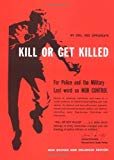History of Shao Lin
 The original Shao Lin temple was built in 495 A.D. by the ruling Bei Wei emperor for an Indian monk who came to China to preach Buddhism. The name Shao Lin derived from the fact that its original temple was located within a small forest on Shao Shi mountain. Shao came from the name of the mountain and Lin comes from the Chinese character that stands for forest. The origin of Shao Lin being its own sect of Buddhism dates back to 540 A.D. when and Indian Buddhist named Bodhidharma, Tamo in Chinese, traveled to China to see the ruling Bei Wei Emperor. At that time, the Emperor had started local Buddhist monks translating Buddhist texts from Sanskrit to Chinese. The intent of this practice was geared towards allowing the general population to practice this religion. The Emperor believed that this act would lead to Nirvana, but Tamo disagreed. Tamo’s view on Buddhism was that you could not achieve your goal just through the good actions performed by others in your name. Tamo then left to meet with the local Buddhist monks at Shao Lin.
The original Shao Lin temple was built in 495 A.D. by the ruling Bei Wei emperor for an Indian monk who came to China to preach Buddhism. The name Shao Lin derived from the fact that its original temple was located within a small forest on Shao Shi mountain. Shao came from the name of the mountain and Lin comes from the Chinese character that stands for forest. The origin of Shao Lin being its own sect of Buddhism dates back to 540 A.D. when and Indian Buddhist named Bodhidharma, Tamo in Chinese, traveled to China to see the ruling Bei Wei Emperor. At that time, the Emperor had started local Buddhist monks translating Buddhist texts from Sanskrit to Chinese. The intent of this practice was geared towards allowing the general population to practice this religion. The Emperor believed that this act would lead to Nirvana, but Tamo disagreed. Tamo’s view on Buddhism was that you could not achieve your goal just through the good actions performed by others in your name. Tamo then left to meet with the local Buddhist monks at Shao Lin.
Originally Tamo was refused entrance to the temple because the monks thought he was just an upstart or foreign meddler. Rejected by the monks, Tamo went to a nearby cave and meditated until the monks recognized his religious prowess and admitted him to the temple. Legend has it that he bore a hole through one side of the cave with his constant gaze; in fact, the act that earned him his recognition is lost to history. When Tamo joined the monks, he observed that they were not in good physical condition. Most of their routine paralleled that of Irish monks of the middle ages, who spent hours each day hunched over tables where they transcribed handwritten texts. Consequently, the monks in Shao Lin lacked the physical and mental stamina needed to perform even the most basic of Buddhist meditation practices. Tamo then incorporated by teaching them moving exercises designed to both enhance the flow of ch i and build strength. These sets, modified from Indian yoga’s such as hatha and raja and were based on the movements of the 18 main animals in Indo-Chinese wilderness, were the beginning of Shao Lin martial arts known as gung fu. The Shao Lin temple was in a very secluded area where bandits traveled and wild animals were an occasional problem, so the martial side of the temple probably started out to fulfill self-defense needs. After a while, these movements were codified into a system of self-defense.
As time went on, this Buddhist sect became more and more distinct because of the martial arts being studied. This is not saying that Tamo invented martial arts, but just that he developed and codified them in such a way that it became so different from the norm at the time that it became known as distinctly Shao Lin. A problem faced by many western historians and students of religion, is the contradiction of Buddhist principles of non-violence coupled with Shao Lin’s legendary martial arts skills. In fact, the Shao Lin practitioner is never an attacker, nor does he dispatch the most devastating defenses in any situation. Rather, the study of gung fu leads to better understanding of violence, and consequently how to avoid conflict. Failing that, a Buddhist refuses to accept an offering of violence (i.e., an attack) and merely returns it to the sender. Initially, the gung fu expert may choose to parry an attack, but if the attacker is both very skilled and determined to cause harm, a more definitive and concluding solution may be required, anything from a joint-lock to death. The more sophisticated and violent an assault, the more devastating the return of the attack to the attacker. Therefore, Buddhists are not hurting anyone, they are just refusing to allow delivery of intended harm.
The Shao Lin philosophy is one that started from Buddhism and later adopted many Taoist principles to become a new sect. Therefore, even if a temple was originally Buddhist or Taoist, once it became Shao Lin, it was a member of a new order. Other temples sprang from the original. This is because the original temple would suffer repeated attacks and periods of inactivity as the reigning Imperial and regional leaders feared the legendary martial powers of the not-always unaligned monks. Refugee Shao Lin practitioners would leave the temple to teach privately or at other Buddhist and Taoist temples to ensure the continuance of the sect. Politically and militarily involved Shao Lin monks, such as the legendary White Eyebrow and Hung Tze Kwan, would be a perpetual source of trouble for the generally neutral and likeable monks.
The Boxer rebellion in 1901 was the beginning of the end of the Shao Lin temples. Prior to that, China had been occupied by western and Japanese governments and business interests. The British had turned the Imperial family into a puppet government largely through the import and sales of opium and the general drug-devastation inflicted on the poor population. This led to the incursion of other European forces including Russia, France, Holland, and later the Japanese and Americans. By the late 1800 s, China was divided into national zones much like Berlin after WWII. The long-standing animosity between the Chinese and Japanese worsened to include all other foreign devils as well. Coupled with the now almost universal hatred by the Chinese for their Empress, a Nationalist movement with grass-roots support was born. Among the front line soldiers of the new order were legendary martial artists, mostly Shao Lin, known as Boxers. Though their initial assaults on the military powers of the occupation governments were not entirely successful, their temporary defeat led to a more modern reformation that included the adoption of modern military tactics and weapons. By 1931, almost all non-Asian occupants had been successfully driven out. This left two major combatants within China, the Nationalists and the Communists. Both sides displayed the typical attitude of many parties of war, if you aren t with us, you are against us. Neutrality meant nothing to either side. Consequently, Shao Lin and other monks were routinely murdered, and their temples destroyed, out of fear that they would later use their vaunted martial arts skills against them later. This caused an exodus to the mountains and hills of the wilderness in the hopes that even though their temples were being destroyed, the Shao Lin knowledge would survive.
There are many stories as to the survival of Shao Lin in the times following China’s adoption of Communism. However, many of these stories are suspect, with the more commonly authenticated versions coming from government records. The fact that Chinese authorities outlawed Shao Lin and martial arts practices makes any story about their history from such sources somewhat suspect. Shao Lin reemerged, though not recognized as a martial art which was still illegal, as a result of a compromise between the post- WWII governments and the national need and history of having a martial arts tradition.
Bibliography
- Yang, Jwing-Ming. Analysis of Shao Lin. Jamaica Plain: Martial Arts Association, c1987.
- Xing, Yan. Shao Lin kungfu: Treasure of the Chinese Nation. Pei-ching: China International, c1990.
- Yang, Jwing-Ming, The essence of Shao Lin. Jamaica Plain: YMAA Publication Center, c1996.




